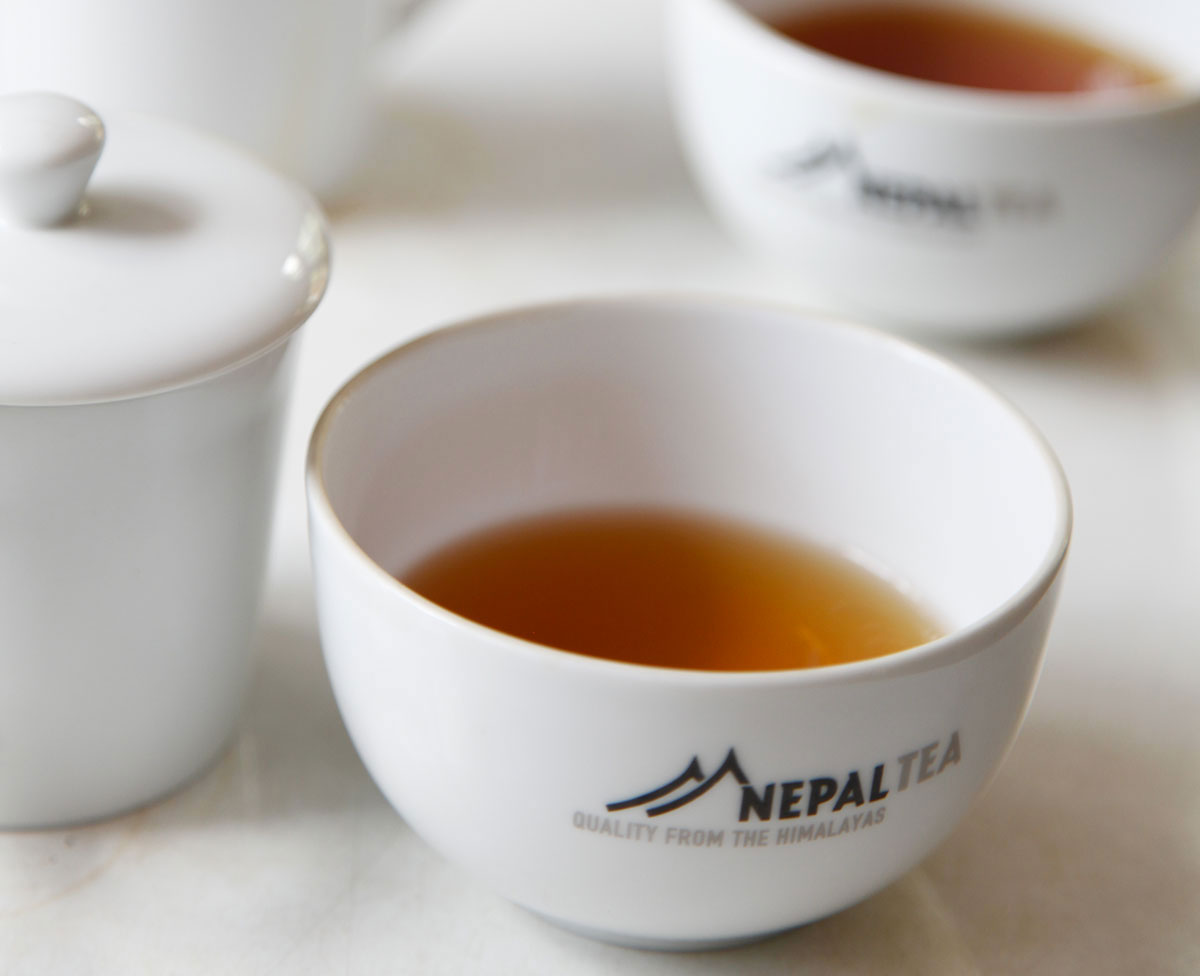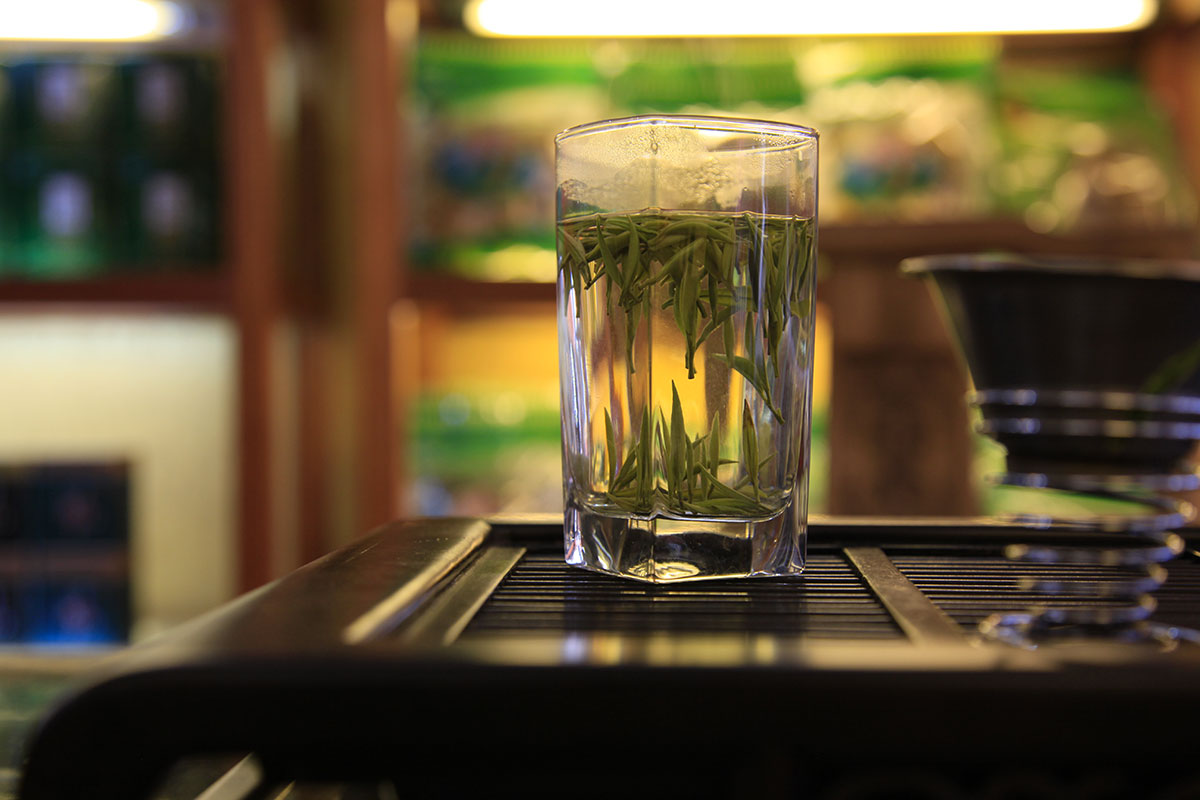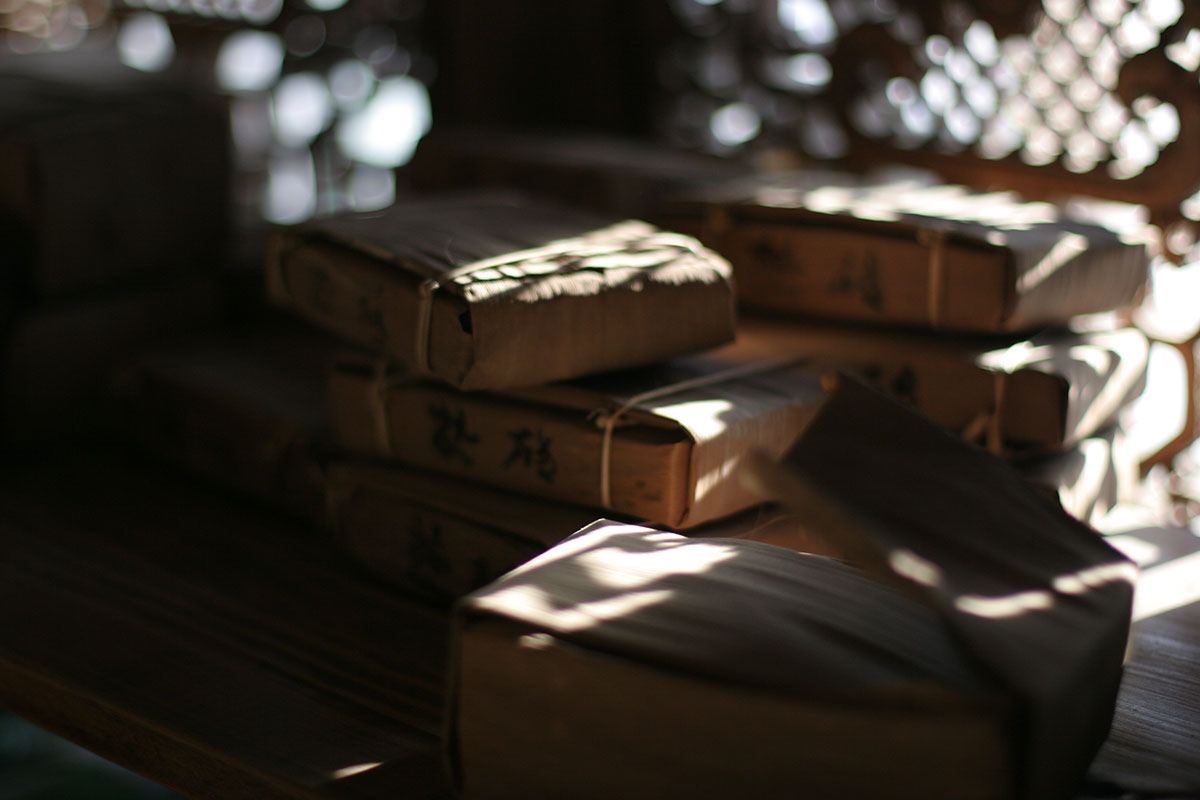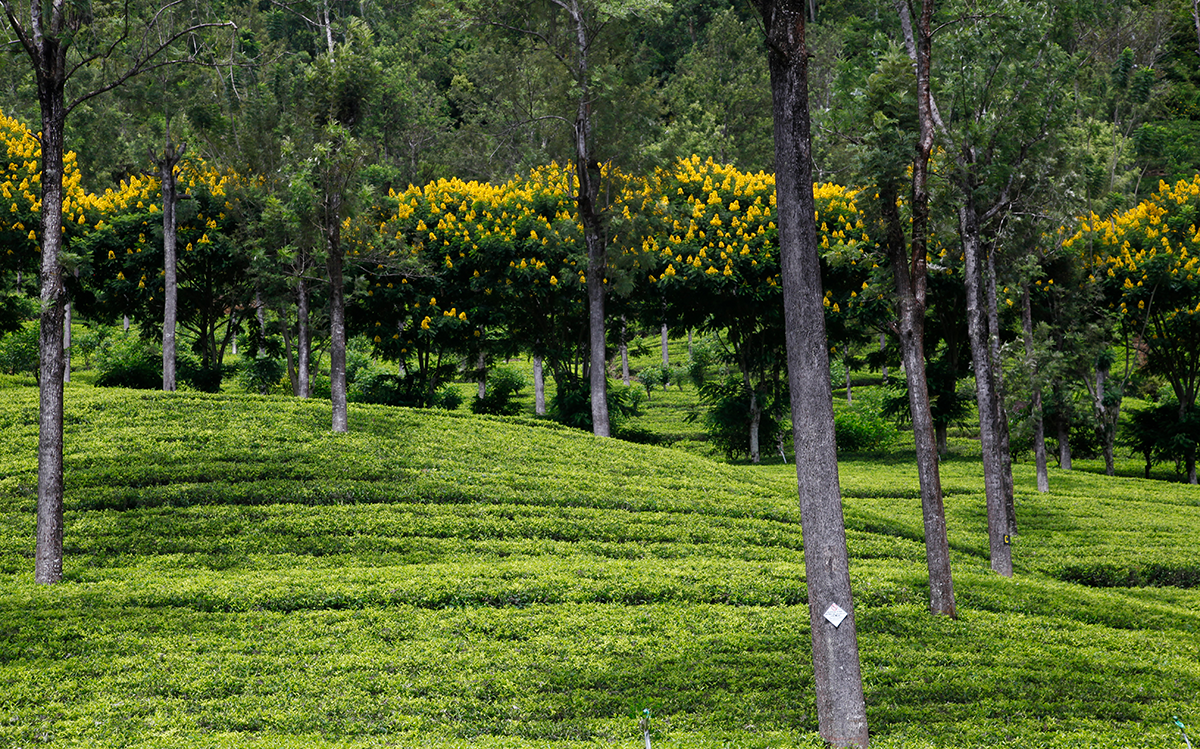Tea isn’t only drunk, it can be eaten too. In Myanmar, for example, lahpet, or lahpet thoke, is a national dish. It’s a salad made from fermented tea leaves to which are added vegetables, fruit, meat or dried shrimps, for example, as well as spices. It’s delicious!
First Steps
Autumn has arrived! For those of you just beginning to explore tea, here are the basics you should know about the plant. Tea comes from Camellia sinensis, a variety of camellia. Several times a year, new growth is plucked from this evergreen shrub to be processed into different types of tea (green, black, white, etc.). The colour of the tea comes not from the shrub itself, but from the way the leaves are handled after harvesting. Tea plants thrive in regions with a hot and humid climate, preferring acidic soil and regular water throughout the year. Finally, altitude (tea plants grow at up to 2,500 meters) enhances the quality of tea while reducing yield.
The aromas of tea
Smell is probably the richest sense in terms of tasting. Food and drink have a smell, or rather a number of smells, which we perceive while tasting, especially if we practise retronasal olfaction by breathing air out through the nose while the substance is in the mouth. In the case of tea, there are many aromas. As we’ve done since childhood with naming colours (red, blue, yellow, etc.), we can categorise aromas too: vegetal, fruity, floral, marine, spicy, woody, undergrowth, buttery/milky, mineral, burnt, animal, and so on.
So the next time you drink tea, ask yourself whether its dominant aromas are floral, fruity, animal or marine, etc. Happy tastings!
The textures of tea
Touch is one of our senses, and it plays a part in tea-drinking. In the mouth, we notice the temperature of the liquid, and also its texture, thanks to our sense of touch. A tea can create the impression of being oily or dry. Some Japanese teas or Taiwanese oolongs, for example, give the impression that the liquid in the mouth is almost creamy in texture. On the other hand, many teas create a sensation of dryness, which we call astringency. Astringency gives a tea its long finish in the mouth. There is no one ideal texture. It’s all about the balance between a tea’s aromas, flavours and texture.
Flavours of tea
When we eat or drink something, we pay attention to its appearance and colour, of course, but once it is in our mouth, we consider the flavour, texture and aroma.
There are five flavours, or taste elements: sweet, salty, sour, bitter and a fifth, lesser known taste, called umami. Tea does not naturally have a salty flavour, but all the other taste elements are present. A tea can have several flavours. Just as an orange is both sweet and sour, a pu erh can be both sweet and umami.
Backlighting
I came to photography late in life, and the first piece of advice I got was to make sure the sun was always behind me to illuminate people’s faces. Twenty years later, I still can’t bring myself to follow that advice. When the sun is out, I naturally turn toward it and often end up with backlit photos, which I like. And when it’s overcast, I still manage to face toward the light source—in this case, the sky—so that my figures always appear slightly mysterious.
Contemplating and Photographing
I came to photography through necessity, and 20 years later I find myself enjoying it a great deal. When Palais des Thés was new, I would travel through Asia without a camera. I came back from my trips with an eyeful of gorgeous landscapes, but not a single image to share with my employees or my customers. Back then, I believed you had to choose between contemplating a scene and photographing it. Now I realise that’s not the case at all. Today, I take the time to contemplate a scene and choose the best angle, and then I linger, motionless, while waiting for just the right light.
About the selection of Chinese new-season green teas
This year, I have chosen ten Chinese new-season green teas. They include well-known names such as Bi Luo Chun, Long Jing, Huang Shan Mao Feng, Ding Gu Da Fang and Yong Xi Huo Qing, as well as some rare pluckings. There are three aims with a selection like this: the teas must be exceptional, clean, and offer value for money.
I’ve travelled enough in China over 30 years to know where to find the best teas. However, every year, more and more Chinese people are buying these rare teas, and domestic demand has gone from non-existent to high, which has, of course, pushed prices up. Also, although European standards on pesticide residues are the strictest in the world, which is a good thing, they put off a number of farmers due to the long, costly analysis process involved, first in China, then in France.
So the 2019 Chinese new-season selection features teas that are rare, clean and the best possible value for money. Happy tasting!
A bit of shade
When it gets really hot, tea plants benefit from a few hours of shade every day. So in regions where temperature can soar, trees are planted above them.
We are like the tea plants – dreaming, as we walk around town, of leafy trees that would shade us from the sun and excessive heat.
A wet shirt
Lotus tea is a Vietnamese tradition. To grow the flowers, you have to get wet. You get wet when it’s time to harvest the flowers. You get wet in the pond, either wading through the chest-height water or in the little leaky boats. And you get wet when it’s time to divide up Nelumbo nucifera by plunging your hand down towards the bottom and grabbing a few rhizomes, which will be planted out in another pond.









